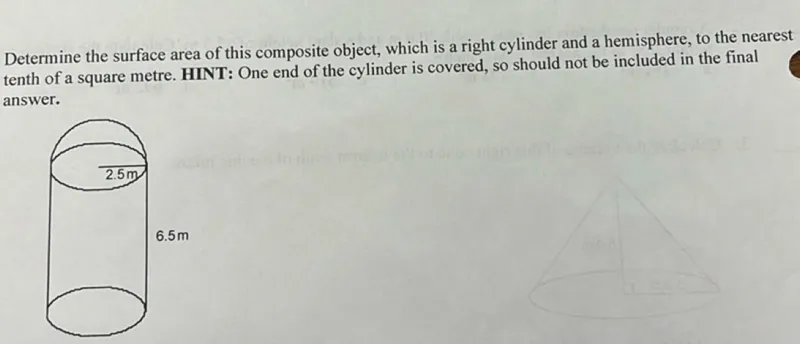Questions: Determine the surface area of this composite object, which is a right cylinder and a hemisphere, to the nearest tenth of a square metre. HINT: One end of the cylinder is covered, so should not be included in the final answer.

Transcript text: Determine the surface area of this composite object, which is a right cylinder and a hemisphere, to the nearest tenth of a square metre. HINT: One end of the cylinder is covered, so should not be included in the final answer.





